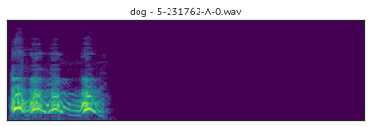Environmental Sound Classification
23 papers with code • 3 benchmarks • 6 datasets
Classification of Environmental Sounds. Most often sounds found in Urban environments. Task related to noise monitoring.
Most implemented papers
Deep Convolutional Neural Networks and Data Augmentation for Environmental Sound Classification
We show that the improved performance stems from the combination of a deep, high-capacity model and an augmented training set: this combination outperforms both the proposed CNN without augmentation and a "shallow" dictionary learning model with augmentation.
AudioCLIP: Extending CLIP to Image, Text and Audio
AudioCLIP achieves new state-of-the-art results in the Environmental Sound Classification (ESC) task, out-performing other approaches by reaching accuracies of 90. 07% on the UrbanSound8K and 97. 15% on the ESC-50 datasets.
End-to-End Environmental Sound Classification using a 1D Convolutional Neural Network
In this paper, we present an end-to-end approach for environmental sound classification based on a 1D Convolution Neural Network (CNN) that learns a representation directly from the audio signal.
Rethinking CNN Models for Audio Classification
Besides, we show that even though we use the pretrained model weights for initialization, there is variance in performance in various output runs of the same model.
Masked Conditional Neural Networks for Environmental Sound Classification
We have evaluated the MCLNN performance using the Urbansound8k dataset of environmental sounds.
CRNNs for Urban Sound Tagging with spatiotemporal context
This paper describes CRNNs we used to participate in Task 5 of the DCASE 2020 challenge.
PaddleSpeech: An Easy-to-Use All-in-One Speech Toolkit
PaddleSpeech is an open-source all-in-one speech toolkit.
Utilizing Domain Knowledge in End-to-End Audio Processing
End-to-end neural network based approaches to audio modelling are generally outperformed by models trained on high-level data representations.
Ubicoustics: Plug-and-Play Acoustic Activity Recognition
Despite sound being a rich source of information, computing devices with microphones do not leverage audio to glean useful insights about their physical and social context.
Environmental Sound Classification on Microcontrollers using Convolutional Neural Networks
Noise monitoring using Wireless Sensor Networks are being applied in order to understand and help mitigate these noise problems.



 ESC-50
ESC-50
 UrbanSound8K
UrbanSound8K
 FSD50K
FSD50K
 SONYC-UST-V2
SONYC-UST-V2
 ESC50
ESC50

